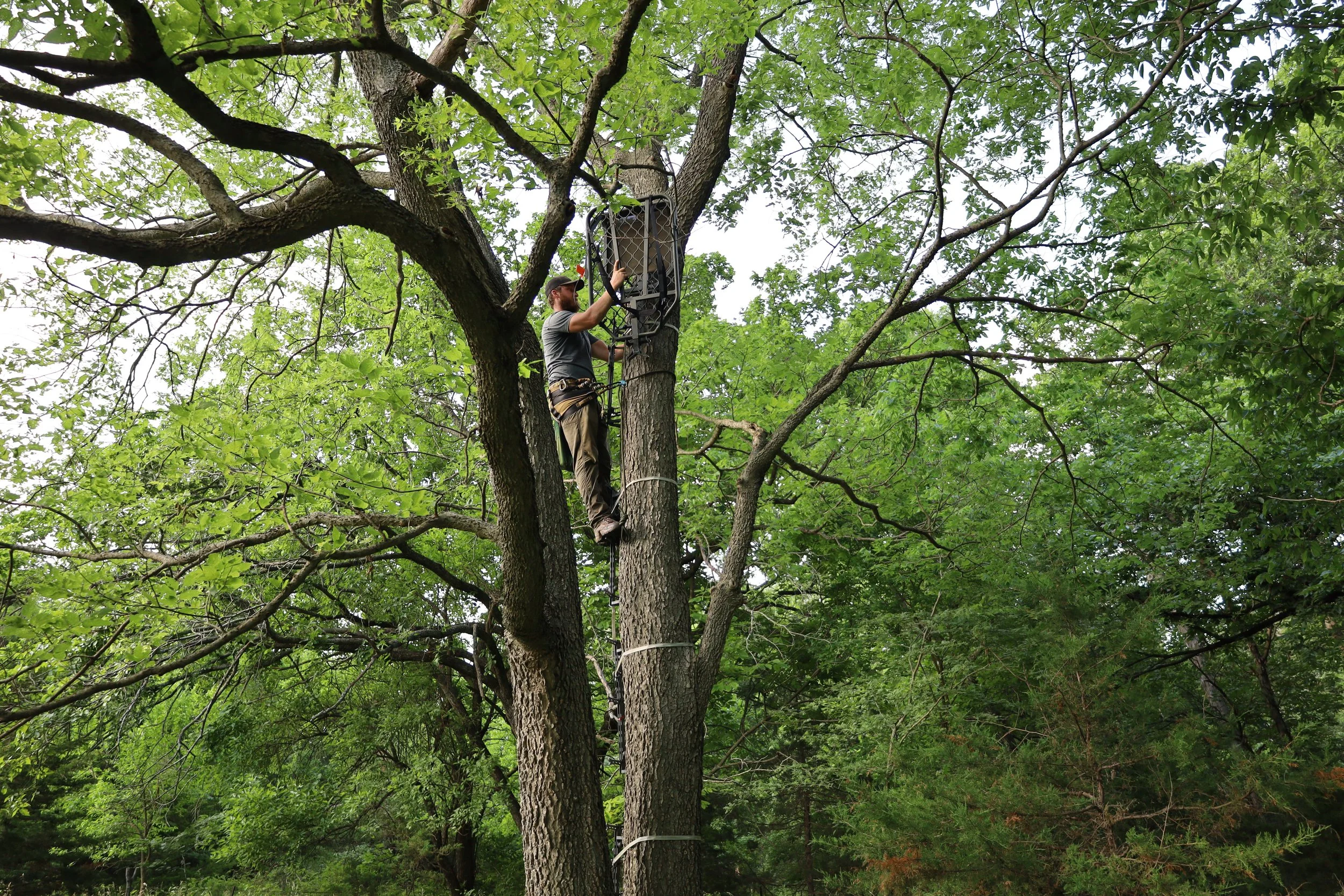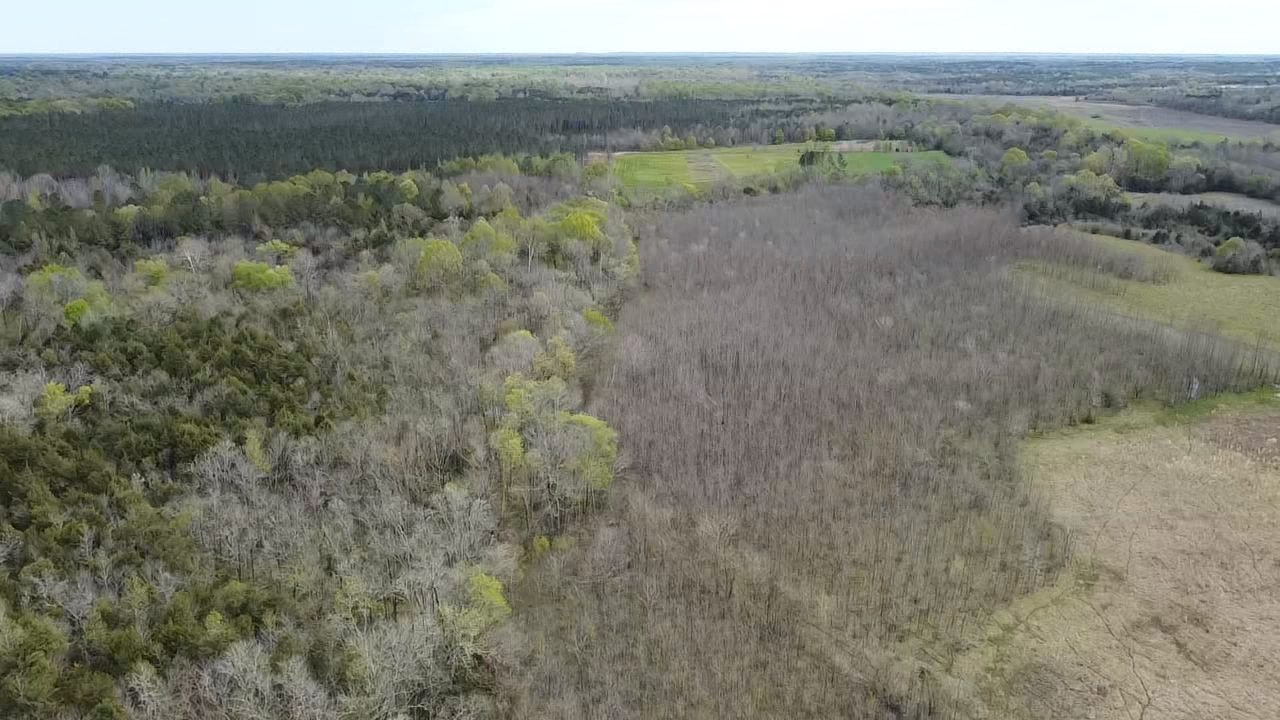Detering Fence Hunting and Encouraging Deer Movement to the Interior of Your Property
One of the most frustrating challenges for landowners and hunters is dealing with neighboring properties where hunters may sit right along shared fence lines, hoping to intercept deer moving between properties. Fence hunting can not only get your target buck killed by the neighbor, but also severely disrupt deer movement and management practices that you are implementing on your property.
1. Create a Secure, Low-Pressure Interior Sanctuary
One of the most effective ways to draw deer, particularly mature bucks, away from the edges of your property is by creating a secure sanctuary in the interior. Deer seek areas where they feel safe from human pressure, and they will naturally gravitate toward sections of your land that are undisturbed.
Even though you plan on hunting interior of your property keep your access routes more on the exterior to help avoid bumping deer. Choose access routes where the wind blows your scent onto your neighbors property and not into your interior.
2. Strategic Food Plot Placement: Draw Deer to the Interior
Food plots are powerful tools for influencing deer movement. Create small, secluded "staging plots" closer to bedding areas within your property. These small plots are typically located in cover-rich areas where deer feel safe feeding during daylight hours before transitioning to larger food plots. By placing these staging plots deep in your property, you can encourage more daylight movement within your boundaries.
3. Screening: Block Line-of-Sight at Property Edges
Creating visual and physical barriers between your property and neighboring fence hunters can be highly effective in reducing the lure of fence lines, preventing neighboring hunters from seeing what you’re doing on property and deterring deer from moving toward problematic areas.
Plant Screening Vegetation
One of the best ways to discourage neighboring hunters and prevent deer from seeing or being drawn toward neighboring properties is by planting thick screening vegetation along property lines. This not only blocks the view but also helps reduce the influence of sounds and scents coming from the neighboring hunter’s stand.
- Switchgrass and Cedars: Tall grasses like switchgrass or coniferous trees such as cedars work well to create a thick visual barrier and can form a dense wall between your property and neighboring lands.
- Natural Brush Piles: If you don’t have the option to plant trees, consider creating brush piles or letting natural vegetation grow along the fence lines. These natural barriers can deter deer from traveling too close to the edges by providing both visual and physical obstructions.
4. Travel Corridors: Guide Deer Movement to the Interior
Deer prefer to move along paths where they feel secure and eases their transition from one location to the next.
Enhance Natural Travel Corridors
If your property has existing ridges, creeks, or other natural features that act as travel corridors, you can enhance them by creating clear, safe pathways for deer to move along. This may include clearing light brush, creating small openings, or planting tall grass to give the area a feeling of safety.
Create New Corridors
If natural travel corridors are lacking in your interior, create new ones by manipulating habitat. Deer will often follow paths of least resistance, so by mowing trails, planting tall screening vegetation, or lightly thinning forests, you can create new corridors that guide deer away from property lines and into the interior.
- Connect Bedding and Food Sources: Design your travel corridors to connect bedding areas with food plots or water sources located in the interior of your property. This will encourage deer to move within your boundaries rather than venturing near fence lines.
5. Offer Water Sources in the Interior
If neighboring properties have access to water sources near the boundary, deer may be drawn to those areas. By providing water sources within your property, such as ponds, watering holes, or natural springs, you can encourage deer to stay within your boundaries.
Place water sources strategically near bedding areas or along travel corridors to make the interior of your land more attractive to deer throughout the day.
Conclusion
Fence hunting can be very disruptive to your management goals, get your target buck killed and more than anything is very annoying. By creating secure sanctuaries, strategically placing food plots, utilizing screening vegetation, enhancing travel corridors, and controlling pressure, you can encourage deer movement to the interior of your property and reduce their exposure to fence-hunting neighbors. These practices not only increase your chances of holding mature bucks on your property but also create a more enjoyable and productive hunting environment overall.
To receive an example of my Whitetail Consulting Blueprint, please fill out the form below!


